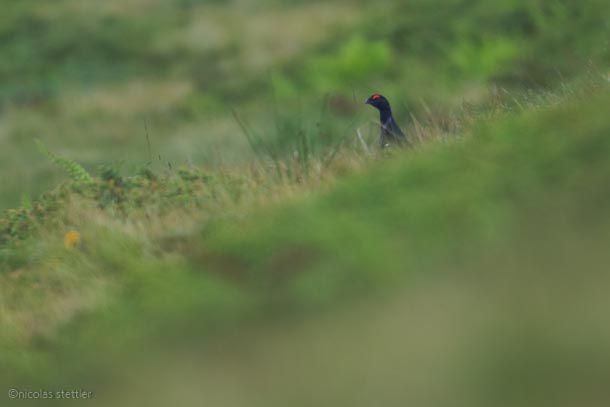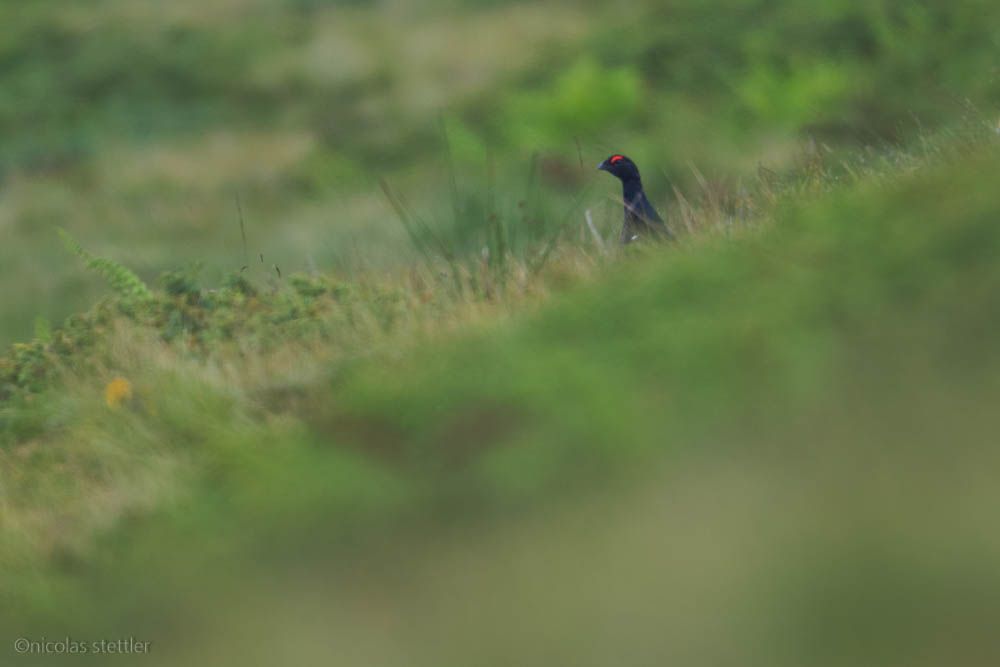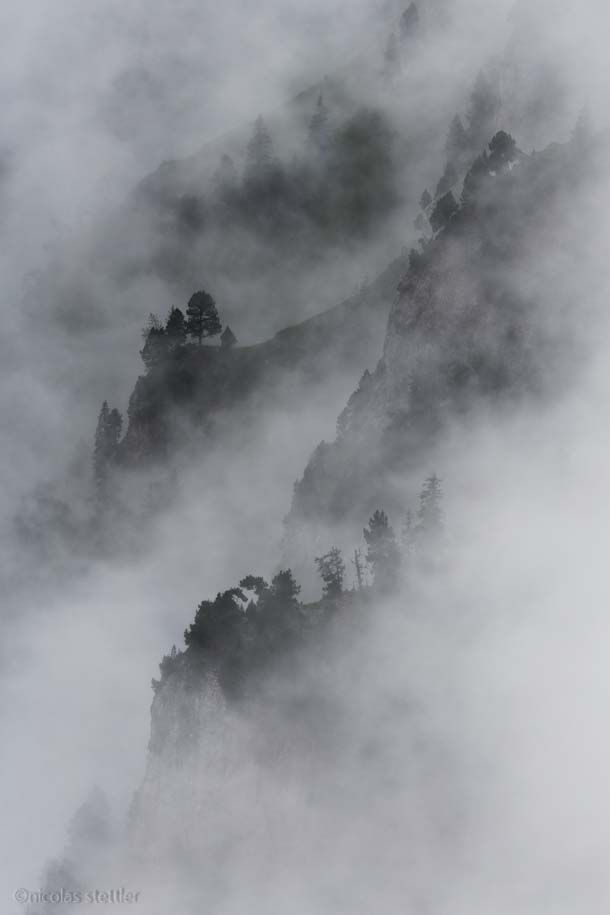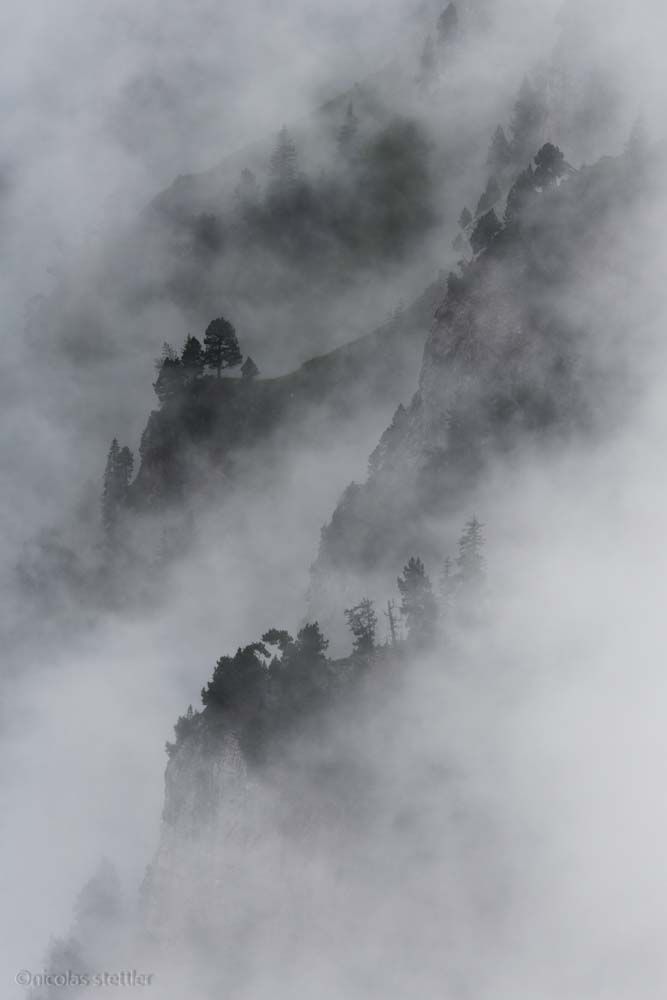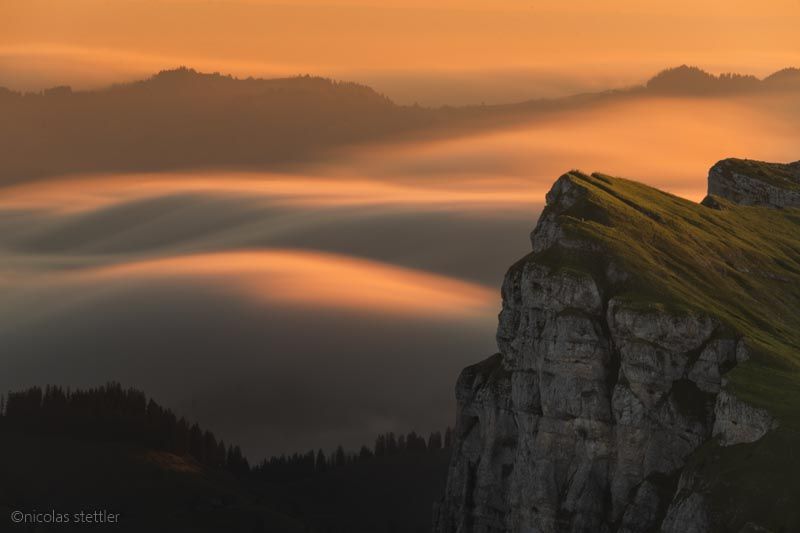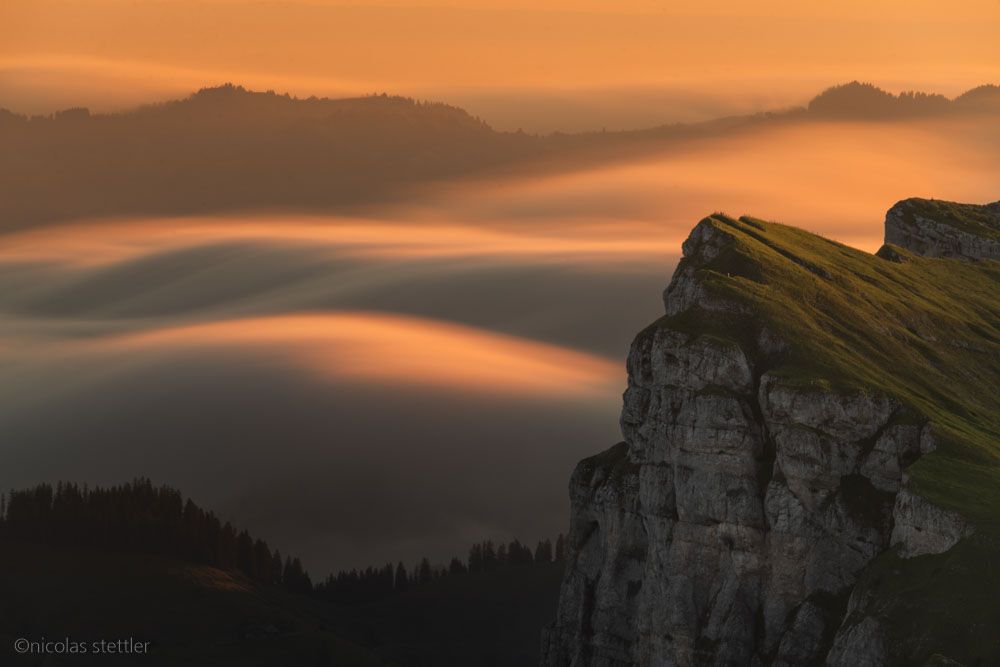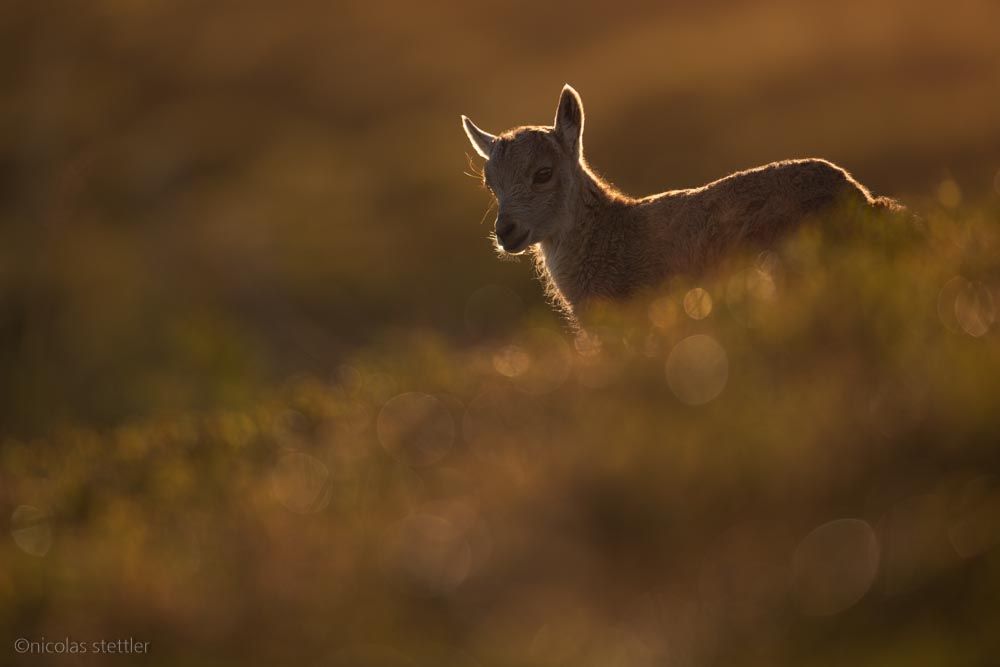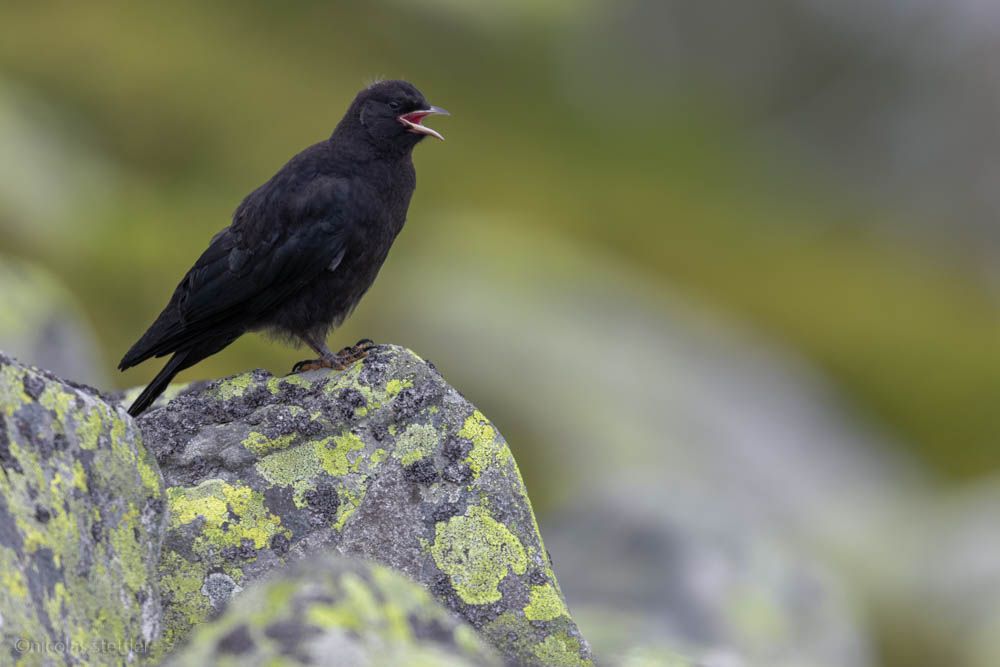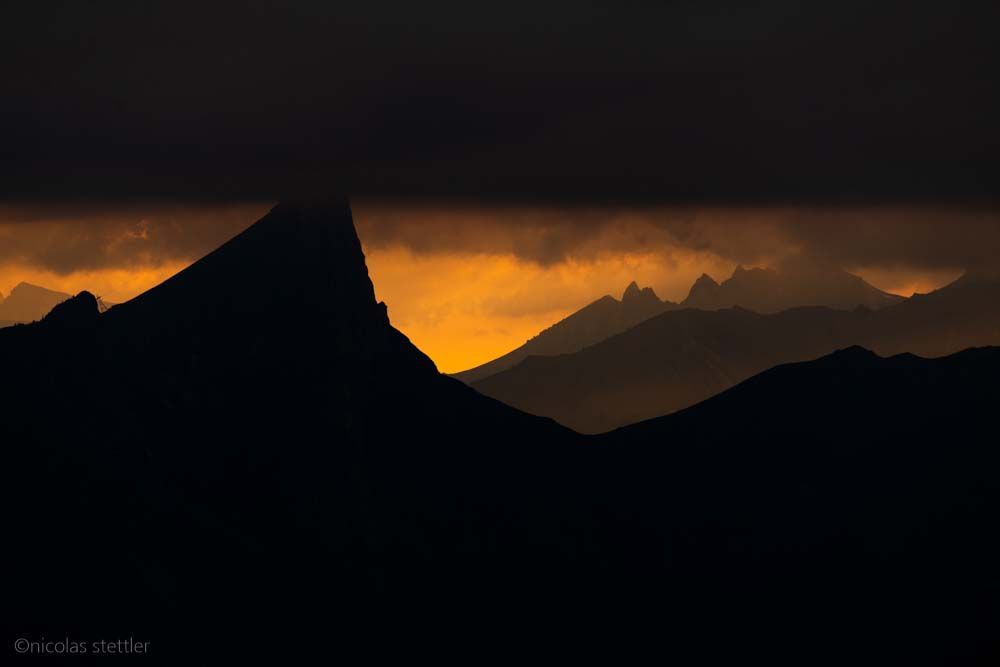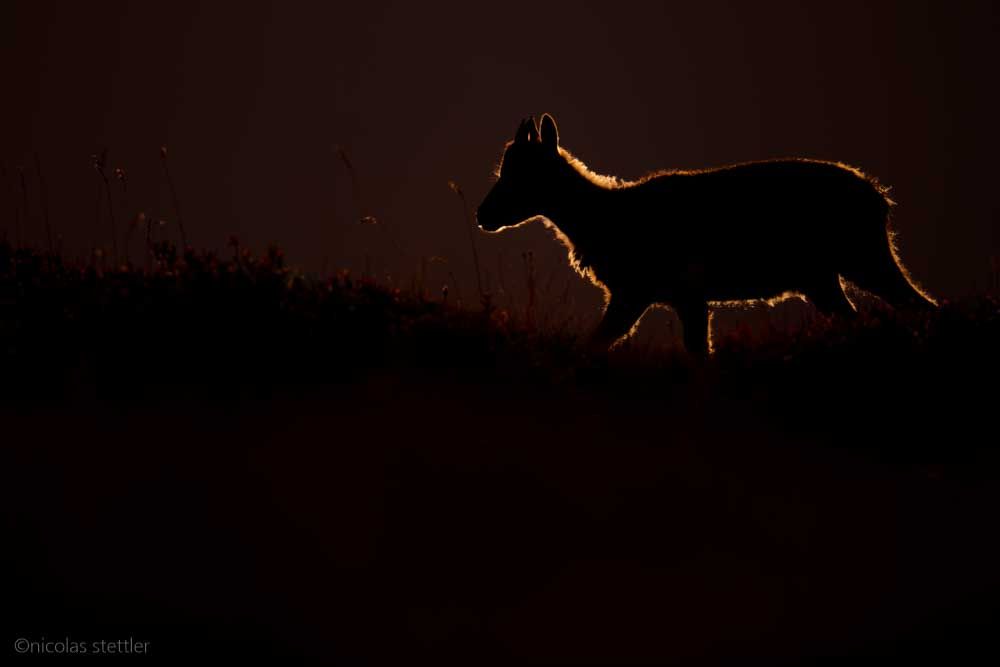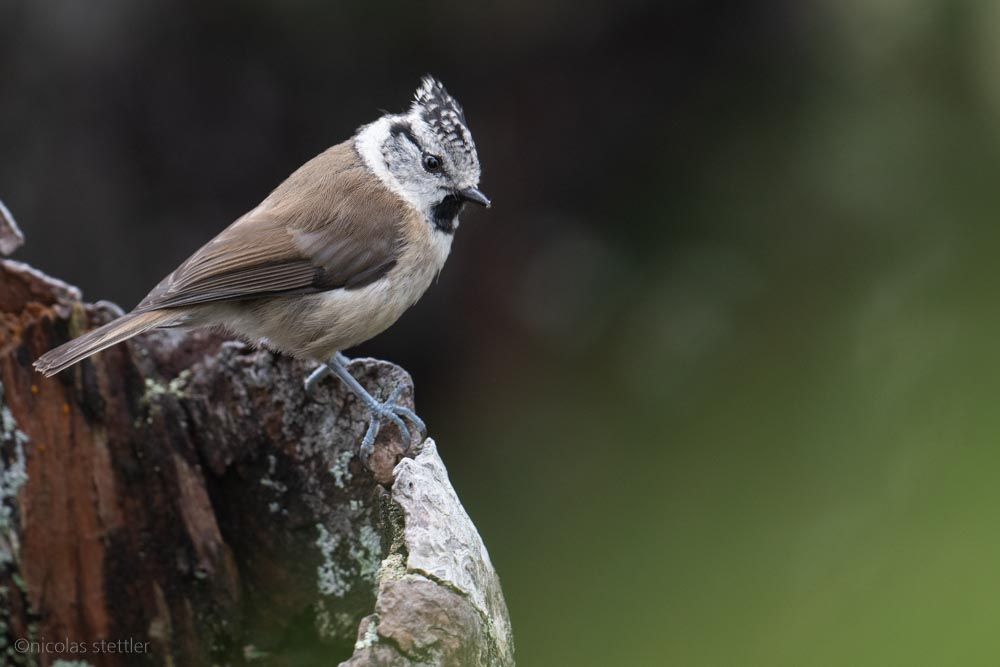A weekend on the Niederhorn
Last weekend I went on the Niederhorn together with Levi Fitze in search of alpine ibexes. Even though both the ibexes and the weather did not do exactly what we had hoped for, we were still able to take some photos.
Already on the gondola we could discover the first alpine animals. A little below the mountain station there was a group of black grouses looking for food. Although we did not really manage to get close to the shy birds, for the first time, I was able to take some pictures of these elegant animals. Up to now I only had a unsharp photo of the black grouse.
From the Berghaus Niederhorn we made our way towards Burgfeldstand. Again and again dense clouds moved up the mountain on both sides. So, we first took a few pictures of the impressive landscape.
As we moved on, we met a small group of ibexes shortly after. Two females rested together with their last year's young on the mountain ridge. Although these animals were very trusting, the weather made it difficult to take pictures. Again, and again clouds covered everything in dense fog.
In the hope of finding more ibexes in better conditions we continued our trip. But up to the Burgfeldstand we could not find any more ibexes. Apart from a chamois we could not discover much else. Also, the hoped-for rock ptarmigan remained undiscovered.
We decided to have a very early dinner in the restaurant and hoped to be able to photograph the ibexes in better light afterwards. The weather forecast was quite promising, and the clouds should have cleared up in the last evening hours. A good portion of pasta later we set off again.
Except for 4 rather shy ibexes we could not find any ibexes. We could briefly photograph them against the light. But the sun disappeared again and again behind thick clouds. As the light became more constant and above all much better, the ibexes unfortunately moved further down into the valley. Without ibexes but with good light we dedicated ourselves again to the landscapes. Unfortunately, the alpine panorama was still covered in clouds. Additionally, I had a lot of trouble to find a composition at all. All exciting compositions were hidden by the clouds and towards the midlands the photographic possibilities were quite limited. In the end I had finally found a composition with the 80-400mm that I was halfway satisfied with.
After the sun had set, we went to our sleeping place, where we unpacked our sleeping bags. Meanwhile the clouds had disappeared, and the temperatures dropped noticeably. With three thick jackets and an additional bivouac bag over the sleeping bag, I was looking forward to a warm night. But soon I noticed that there was probably still a lot to improve on my equipment. Together with cold feet and the constant cool wind I had trouble falling asleep at all. Although I was completely overtired, I only fell asleep in the early morning hours.
Finally falling asleep I almost slept through the alarm clock. But when I saw the dawn, I was awake in no time. Levi had also seen the dawn as well and only a few moments later we were already on our way to Burgfeldstand. We left our sleeping bags at the sleeping place. Thanks to the high pace I was able to forget the cool night quickly. But unfortunately, there were no ibex sightings and so we took pictures of the sunrise at the Burgfeldstand. But the cloudless sky did not offer many interesting photographic possibilities. Again, I decided for the 80-400mm and concentrated on a more distant fog bank. Together with a 10-Stop filter I could expose the scene for about 3 minutes. This resulted in the fog being completely obscured and added something special to the picture.
Soon we made our way back to the sleeping place. On the way there we met a large group of ibex. Among them was a young one of this year, which I could take a picture against the light. But soon the light became too hard and so we left the group behind. Arriving at the sleeping place, I also realized why I was so cold during the night. The whole bivouac bag and the sleeping bag inside were soaking wet. After realizing that a bivouac bag should not only be waterproof but also breathable, we went back to the mountain house where we took the first gondola home to the valley.
The photographic results of this weekend were relatively limited but nevertheless it was a great experience. Not only was it the first time I spent the night outside at 2000 metres above sea level with a sleeping bag, but once again I realised that you should never go out into nature with high expectations. It's much better to go out into nature and just take the things as they come.


